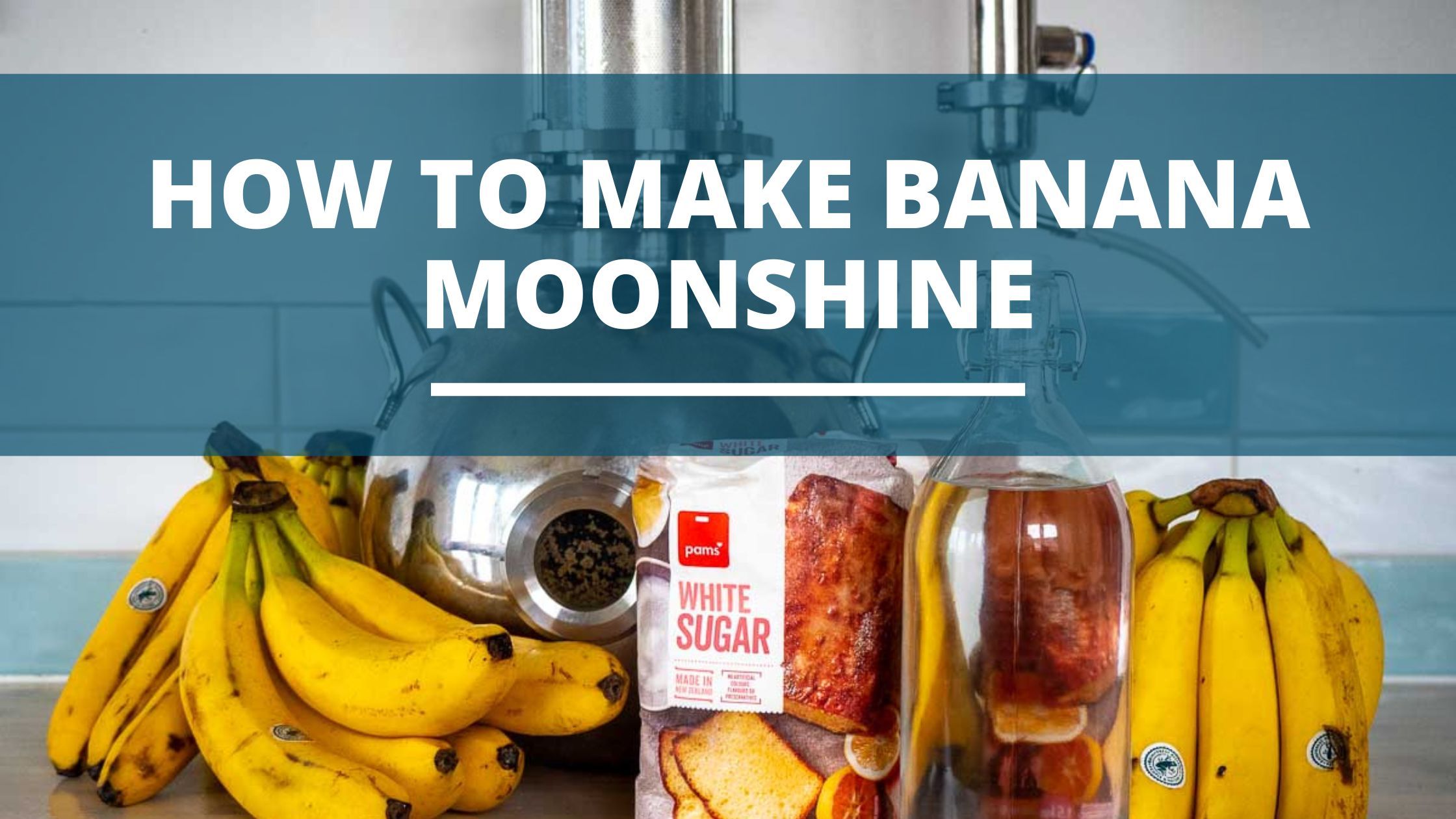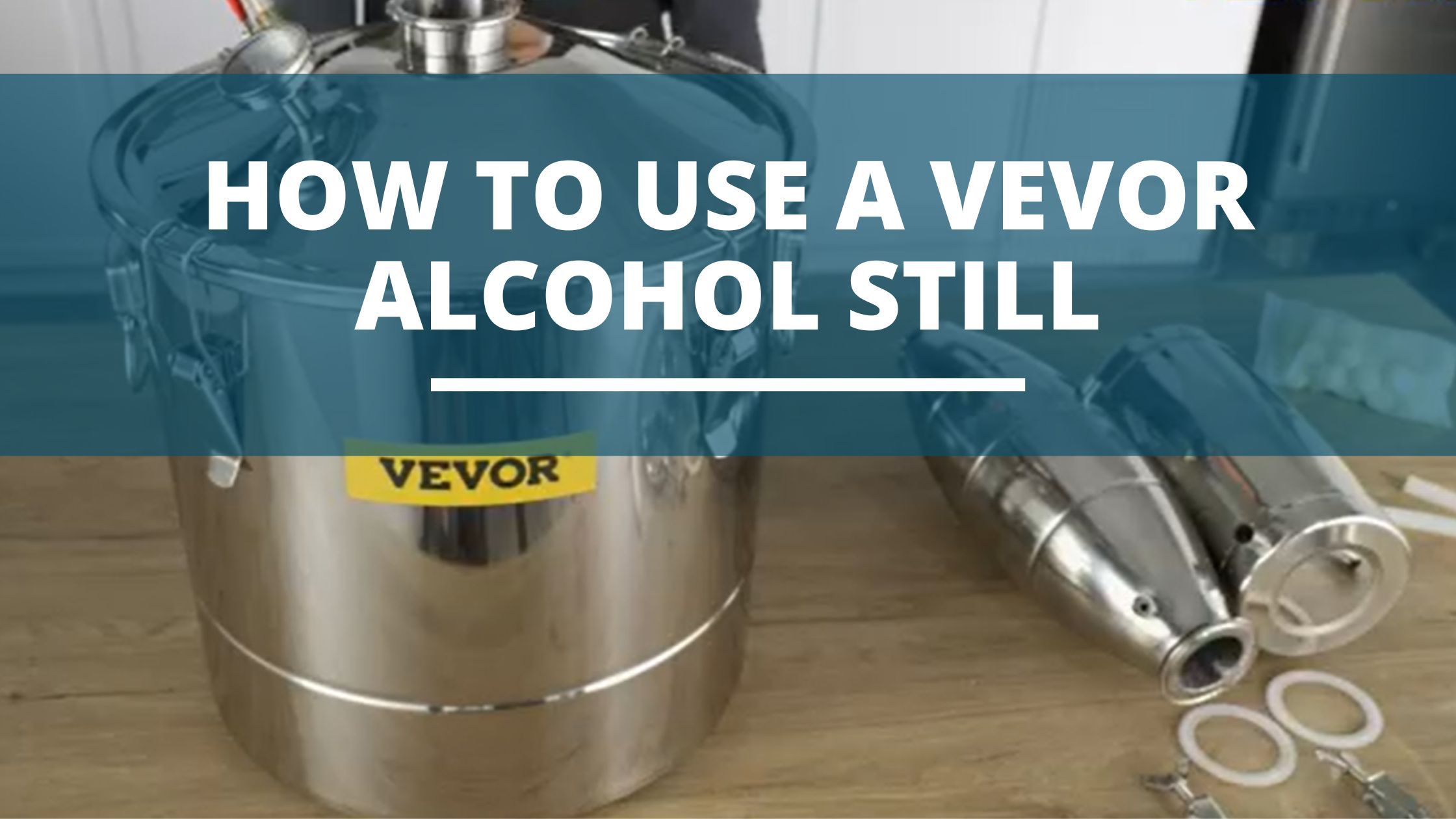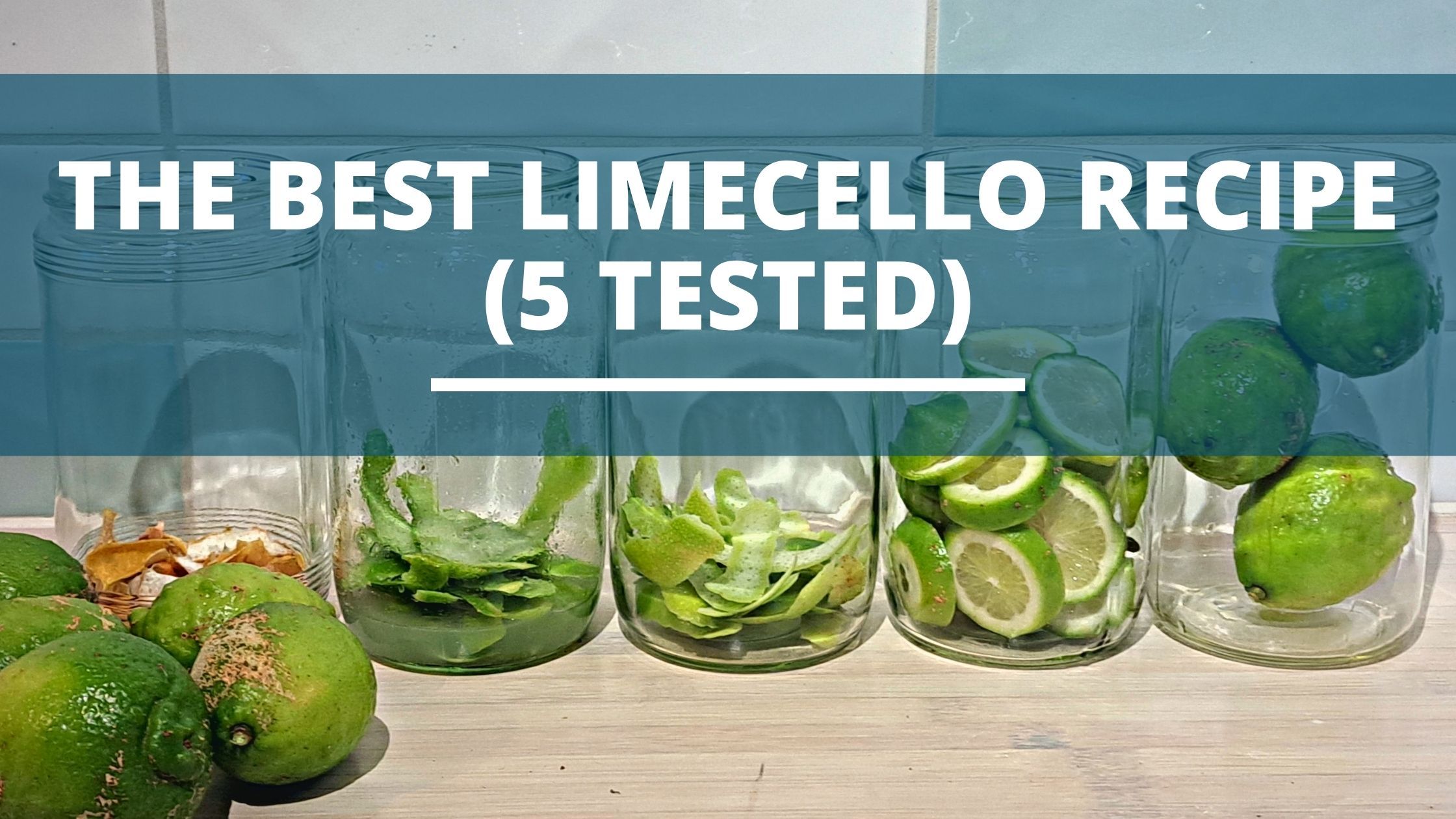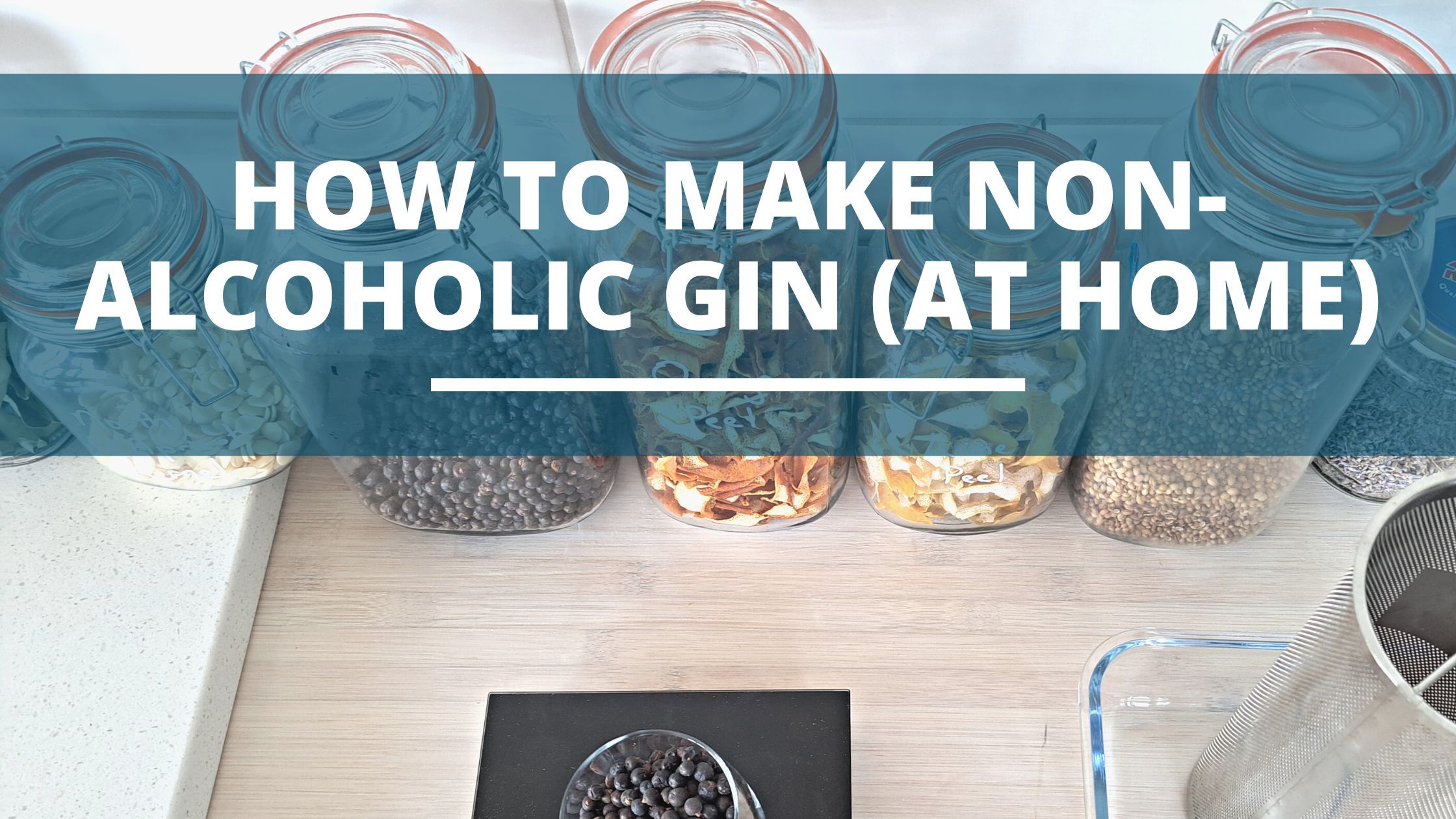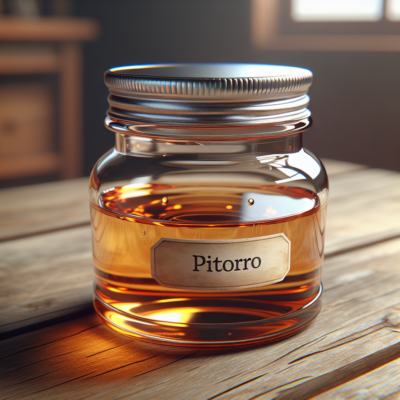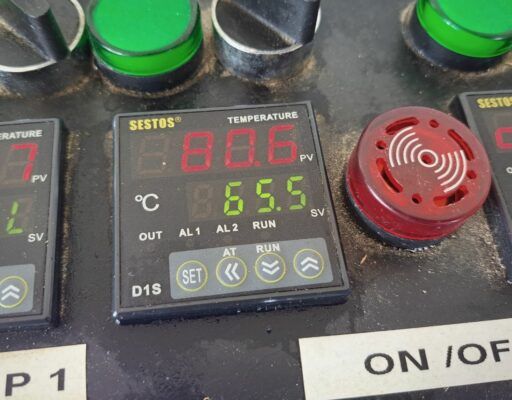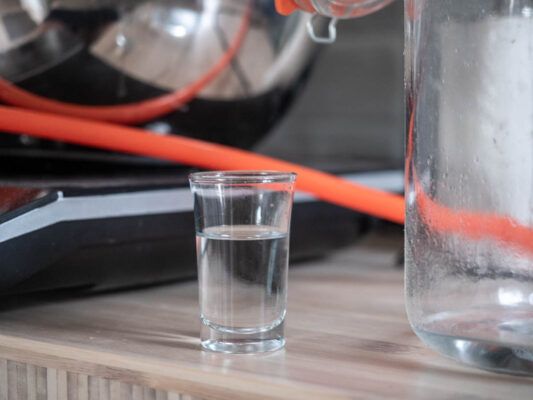From improving the texture to prolonging the shelf life of baked goods, inverted sugar truly is a baker’s best secret. But did you know you can use this magical elixir to improve the quality of your spirit? It’s highly fermentable, allowing for a high-proof spirit, and creates a smoother well-rounded drink. To make: Now you’re{…}
Let’s face it, mastering the art of distilling takes time and expertise. And despite being aware of the importance of networking to enhance your competence, you sometimes don’t have the time for on-site learning. While our website has an abundance of free information, it’s hard to know where to start That’s where online distilling courses{…}
Bananas are versatile fruits you can enjoy in various ways. But have you ever considered turning them into delicious and potent liquor? Banana moonshine, also known as banana brandy, is an exciting recipe you can try. It uses minimal ingredients and is simple to make, making it an excellent choice for beginner moonshiners. This batch{…}
The Vevor still is a fantastic entry-level kit that produces high-quality spirits, making it perfect for novices and those on a budget. To use: The still comes in different models, with each requiring a slightly different setup and operation. Carry on reading to get started with yours. Vevor Still Instructions: A Basic Overview The Vevor{…}
Looking for a refreshing summer drink that’s easy to make? You’ve come to the right place! Limecello is a delicious variation on the classic Italian liqueur limoncello, and we’ve tested five different variations to bring you the best recipe. From dried lime zest to whole limes, we’ve tried it all, and we’re ready to share{…}
Finding a suitable yeast can be a daunting task, as it can make or break a spirit’s flavor profile. That’s where yellow label Angel yeast comes in. This unique blend of fungi and enzymes is a popular choice amongst distillers because it has high alcohol tolerance and can produce a smooth spirit that allows other{…}
Home brewing requires attention to detail in every step to achieve the desired flavor and quality of the final product. One of the most critical aspects is temperature control. Proper temperature control ensures your fermenter maintains the ideal fermentation conditions. One way to encourage such an environment is to use the STC-1000 controller. To set{…}
With more people seeking to enjoy the flavor of gin without the negative impact on their health, non-alcoholic spirits are becoming popular. If you relish the distinct flavor derived from gin and want to replicate store-bought brands in the comfort of your home, you’ve come to the right place. To make non-alcoholic gin, you’ll need{…}
Are you looking to explore the world of non-alcoholic gin? Look no further than our list of the 7 best alcohol-free gins! We’ve scoured the market to bring you the finest options to satisfy your taste buds. The best alcohol-free gins are: These spirits are made from the same tasty botanicals as the original spirit{…}
Home brewers are always bombarded with the next, best brewing unit. Just when you think you’ve found your go-to brewing system, you’re presented with one that promises you all the features and functions to ease your load during brew day, without compromising quality. One of those systems is the Grainfather. Grainfather is an all-in-one brewing{…}
How to Make Pitorro At Home (Step-by-Step Guide)
Pitorro is a popular Puerto Rican drink, especially during special occasions. It follows the same{...}
The Best Still For Making Whiskey (In 2024)
With so many whiskey-making stills on the market, choosing one that will cater to your{...}
The Best Still For Making Vodka (In 2024)
I make a lot of gin, and to make gin you need vodka first. Over{...}
The Best Thermometer For Distilling (In 2024)
One aspect that allows us to create high-quality spirits hinges on having a reliable and{...}
How To Cut Heads and Tails When Making Gin
One question we get asked a lot in the Facebook group and our Ask an{...}
A Distillers’ Guide To Excise Duty (Excise Tax Considerations)
From the Author: This article has been written as a necessity given the variety of{...}



